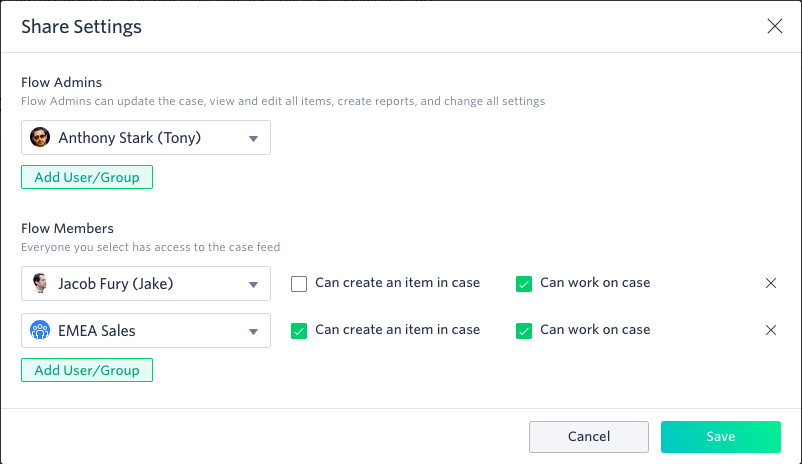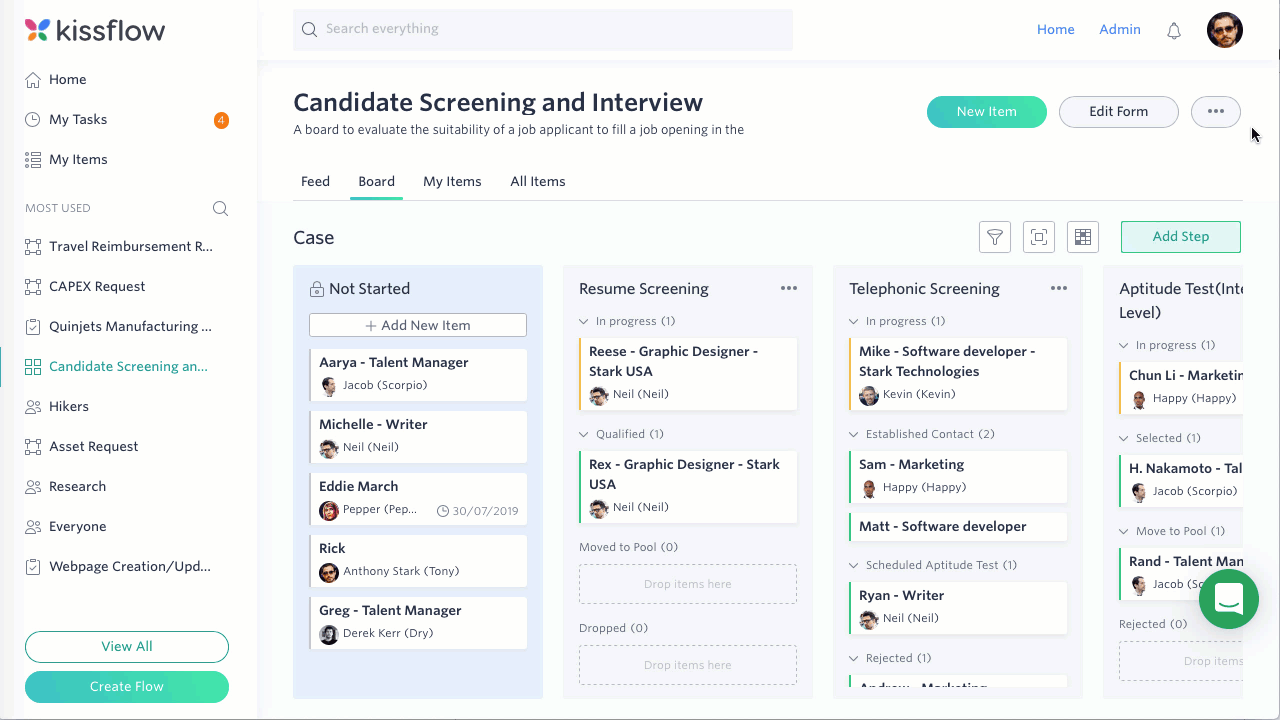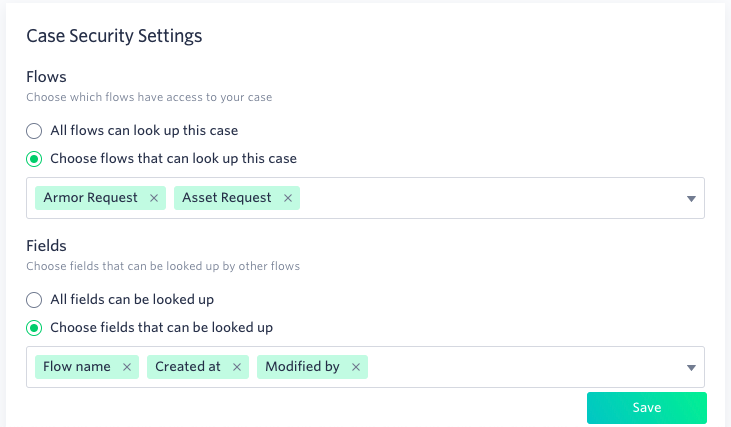Administering a case
When you create a case, you are the Flow Admin. Here's an overview of what a Flow Admins can do.
Share settings
To share your case, click the More options button ( ) > Share settings.
) > Share settings.
At the top of the popup box, there is a section called Flow Admins where you can select other users or groups. Flow Admins can edit and delete the case, view and edit all items, and update other settings.
In the section called Flow Members, you can add members to the flow who have access to the case feed. If you allow members to start items, they will be able to initiate a new item in the case and track its progress, but cannot act on the item. If you allow members to work on the case, they will be able to drag and drop items to different steps and edit the values in forms.

Case settings
To update your case's settings, click the More options button ( ) > Case settings. There are three sections you can update: Card Settings, Feed Settings, and Security Settings.
) > Case settings. There are three sections you can update: Card Settings, Feed Settings, and Security Settings.

Card settings
Card settings allow you to choose the form fields that will display on the feed card when it appears on the case's feed.
To customize the feed card, under the Card appearance section, click Customize Card. Then select up to six fields to display on the card, and click Apply. You can see a preview of the card item.
Allowing anonymous posting
Flow Admins can decide if members of the case can post anonymously on the case's feed. By default, this setting is turned off. To enable anonymous posting, select the Post Anonymous checkbox, and click Save.
Case security settings
The security settings give you control over what has access to your data.
Flows
By default, all flows will be able to look up the field values in your case. Change this setting by clicking Choose flows that can look up this case and type the flows you want to grant access to. To remove a flow, click the Remove button () next to the flow name. Click Save when finished.
Fields
You can also protect some form fields in your case from being looked up. If you want to protect a form field, select Choose fields that can be looked up and choose the fields that can be looked up by another flow. All other fields will be inaccessible to flows. To remove a field, click the Remove button () next to the field name. Click Save when finished.

Case history
Kissflow records actions performed on your case. To view your case history, click the More options button ( ), and then Case history.
), and then Case history.
The case history shows:
- Timestamp - The exact time when an action was performed.
- Action - What kind of action took place. Some of the actions are: member added to the case, case permission changed, member permission modified, comments added, etc.
- Performed by - The name of the person who performed the action.
Additionally, you can sort, search, and filter fields in your case history.
Archiving and deleting a case
You can archive a case board and its items when you don’t need it anymore. When archiving, the board and all its items will no longer be viewable and no one can add new items to it. However, case history will be retained.
To archive a case, click the More options button, then click Archive case.
To unarchive a case, click View All on the left navigation panel to open the Explorer. Search for the name of the case or click the Archived checkbox under the section called Status. When the archived case is shown, click the case and then click Unarchive. You can also permanently delete the case and all its data by clicking Delete.
Duplicating a case
If you want to make a case very similar to another one, you can duplicate it. Duplicated cases have the same configured columns, but item cards from the original case are not duplicated.
- Click the More options button (
 ) and then click Duplicate case.
) and then click Duplicate case. - The default name of the new project is Copy of <original case name>. You can change the name.
- Click Duplicate.
